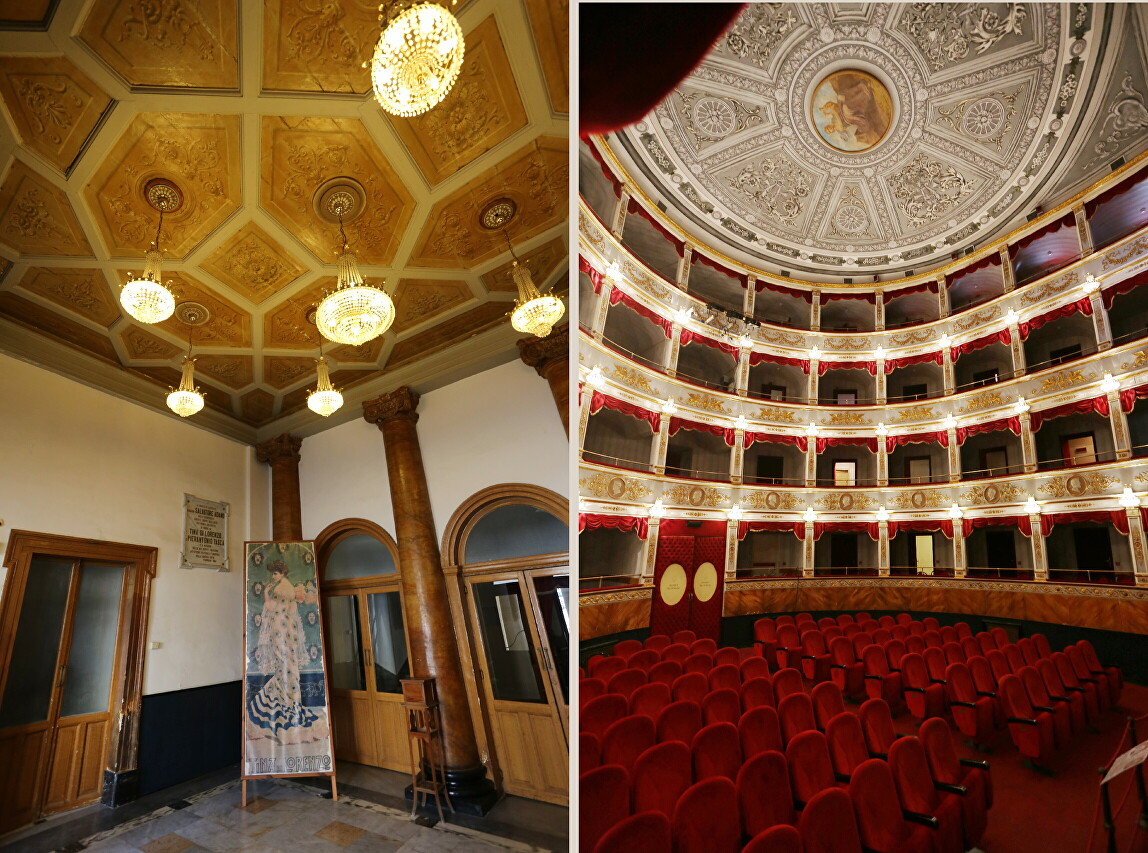Teatro Tina Di Lorenzo, Noto
After the earthquake of 1693, the city was rebuilt, but it did not have a theater for more than a hundred years. At the beginning of the 19th century, a part of the Ducezio Palace began to be used for performances, but this could not meet the needs of the population. In 1831, Noto became the capital of the province of Syracuse, and the lack of a theater undermined its prestige. In 1851, the city council heard the voice of the public and began discussing this problem, but four more years passed before the real cases. In 1855, the collection of donations began, and the family of the Marquises of Casteluccio bought a building on the central square, on the site of which they planned to erect a theater building. The project was entrusted to the engineer Francesco Sortino, in 1863 he died, and the project was continued by Francesco Cassone. It was only in 1846 that the Noto administration signed a contract with the Ruiz construction company from Syracuse. Residents of Noto were involved in the construction of the building, the functions of the foreman were performed by Fortunato Queriau. The interior decoration was done by local artists Subba and di Stefano, and the master Santi Ferrara was invited from Messina to gild it. The statue of the allegory of music, which stands in the lobby of the theater, was carved out of sandstone by sculptor Giuliano Palazzolo. The theater was named after Vittorio Emanuele III and inaugurated on December 4, 1870. Famous artists Tina Di Lorenzo, Pierantonio Tasca and Eleonora Duse were the first to ascend to his stage. In 2012, the Theater and its foundation were named after the famous actress from Noto Tina Di Lorenzo. Concerts and performances of various genres are given in the theater, performances usually begin at 8-9 pm. The cost of tickets is affordable, from 20 euros, there are season tickets for regular visitors.You can get acquainted with the cinteriers of the theater during the day with a single ticket, which also includes a visit to the city museum (Museo Civico) and the Ducezio Palace.
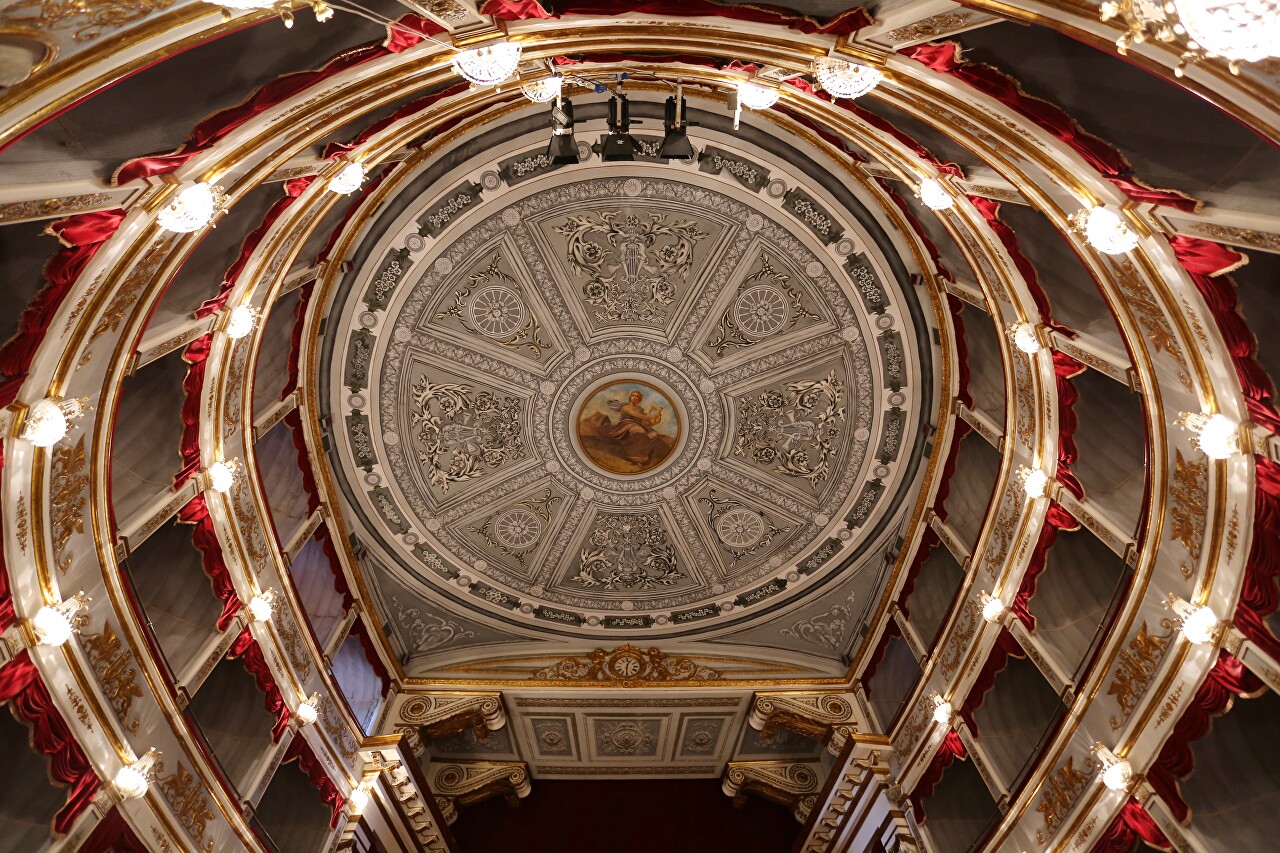
..
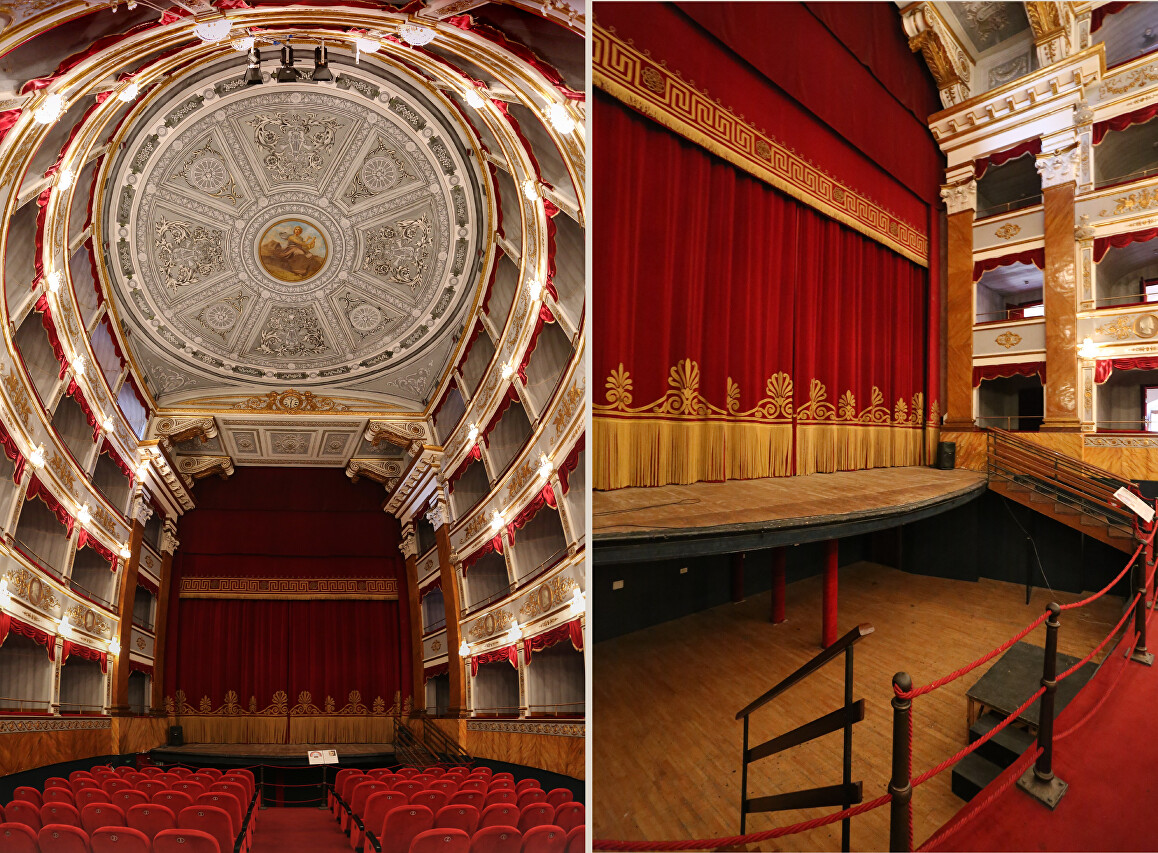
..
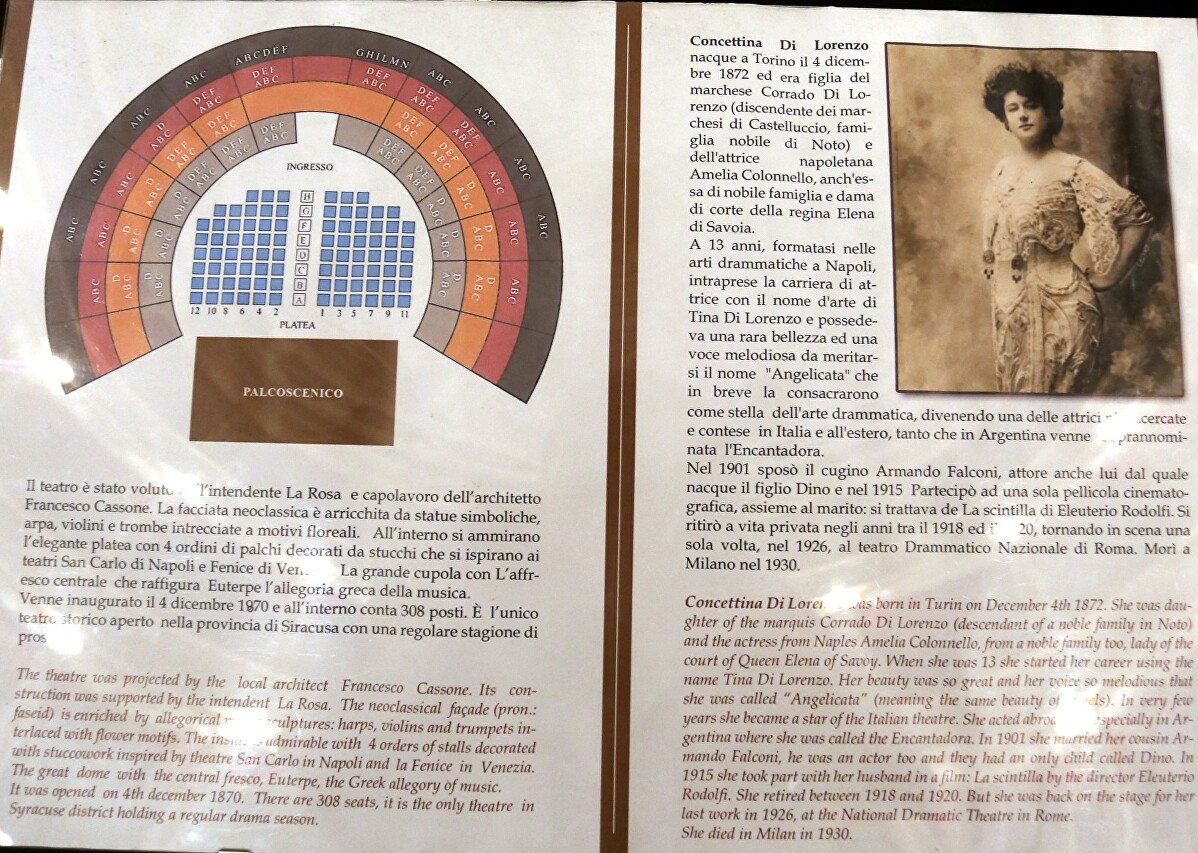
..
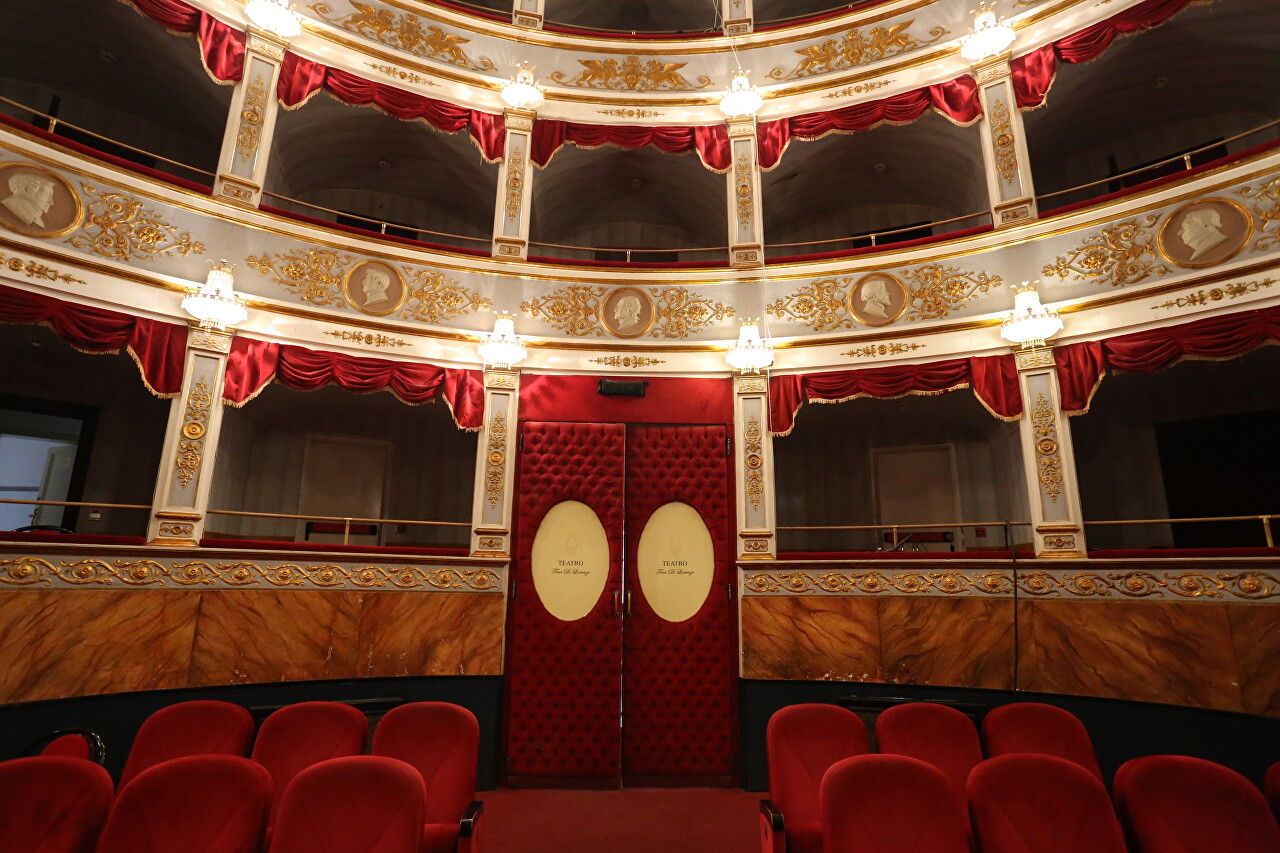
..
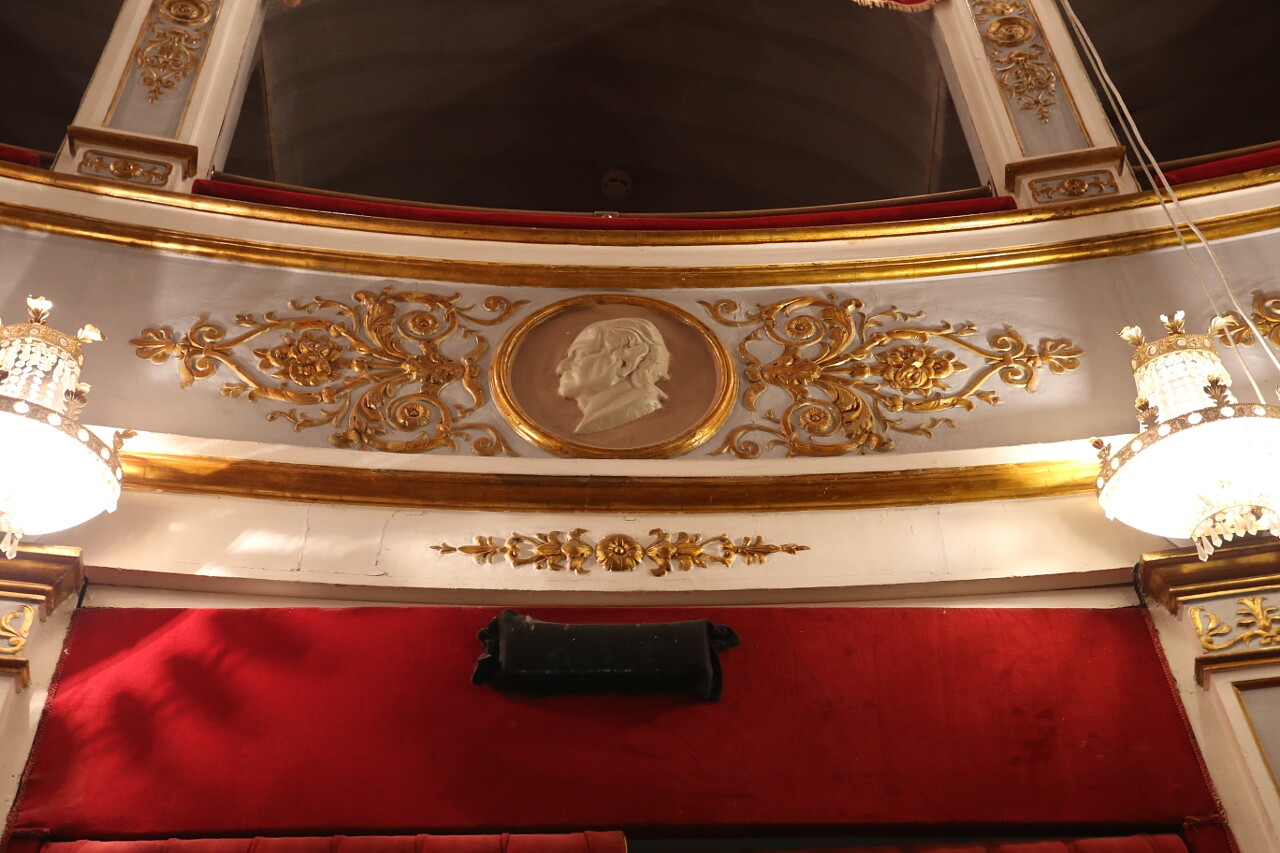
..
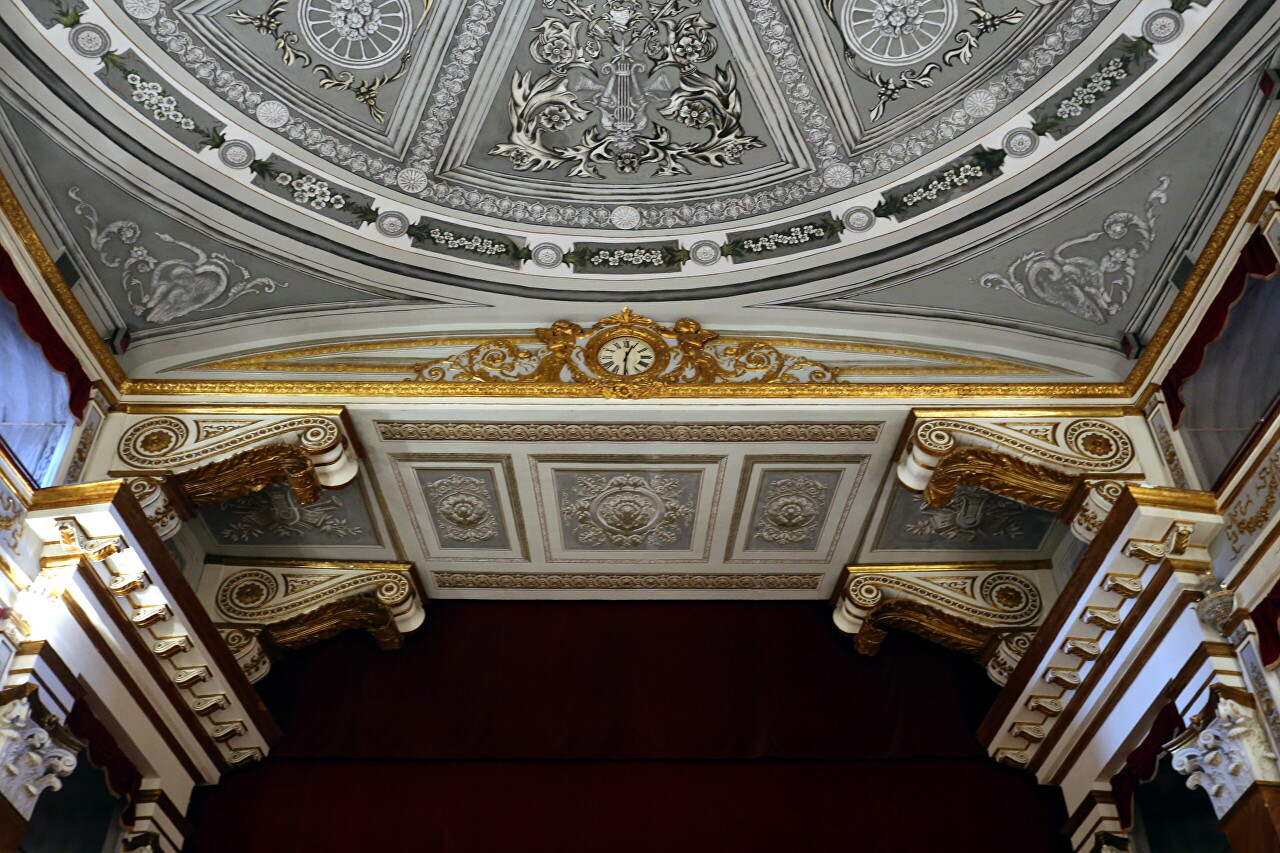
..
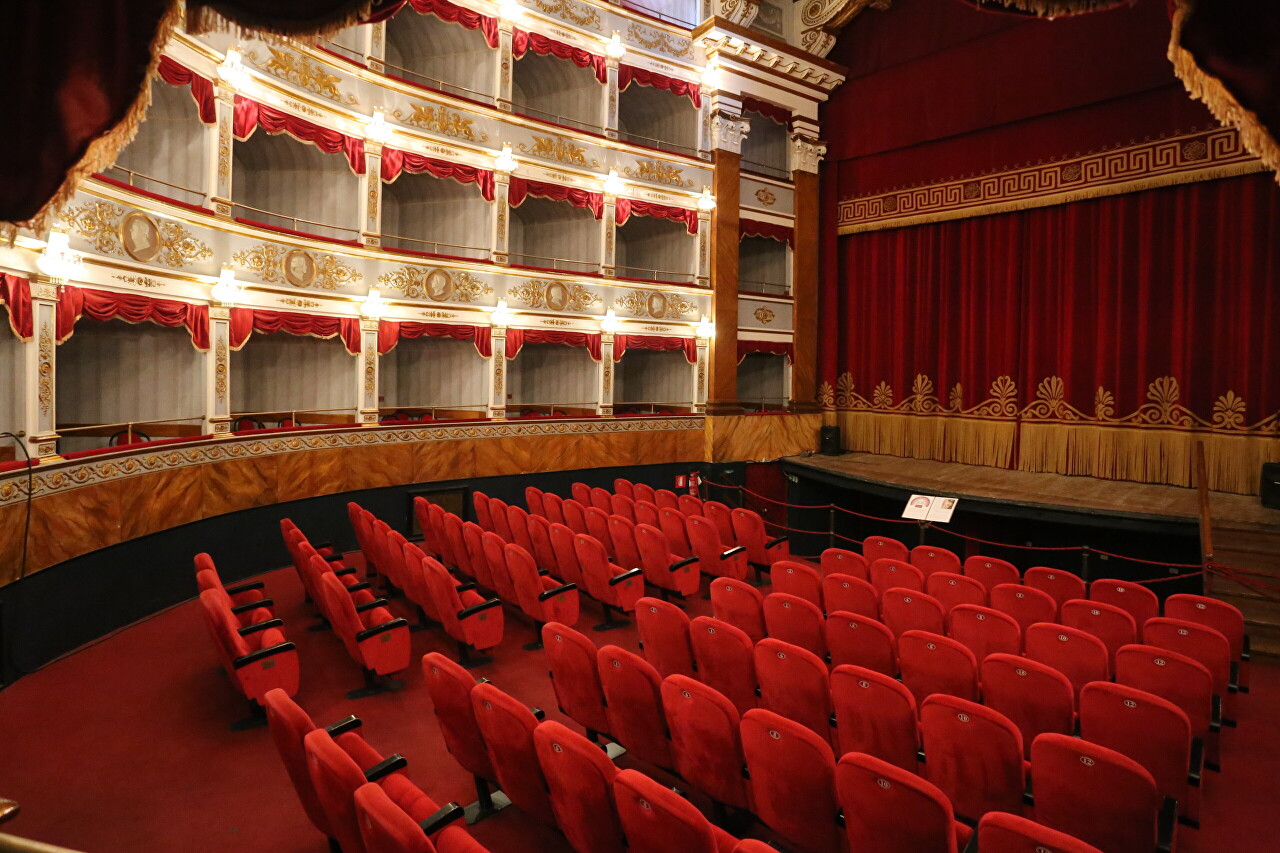
..
